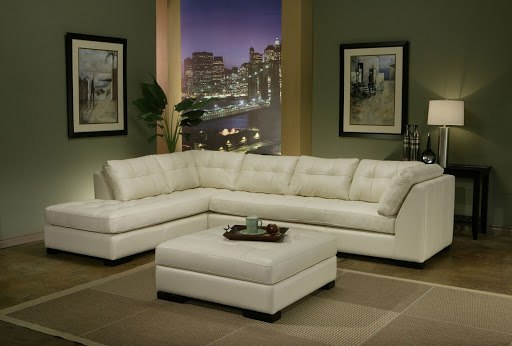Your Cart is Empty
Wilsonville Showroom Closing - Final Days!
Wilsonville Showroom Closing - Final Days!
RUGS
FURNITURE
LOCATIONS
The Essence of Design, Part 1 - Gauging a Room’s Space, Purpose and Theme

We all dream of having the perfect home that allows us to feel safe and at ease, while also dazzling our friends and family with a space that welcomes them in. The dream would be to invite them to stay awhile, but very few people are able to realize that dream completely on their own. There are tons of decisions to make when it comes to picking out your furniture and colors. It can be overwhelming for many people, and make you feel like interior design is something you could never hope to grasp.
But interior design, like anything else, has some basic tenets that just about anyone can understand and use to express the unique vision they’ve conceived. Over a series of four posts, we’ll cover these basics of interior design, and use a case study from one of our own concepts, to show you how you can use these basic tenets to design the room of your dreams completely from scratch.
This first post will discuss how the space available in a room, and a room’s purpose, will help you determine your theme, which will lay the foundation for the rest of your design choices.
It Starts With the Space
Measurements Come First
When I say space, you’re probably thinking about measurements, and you’re absolutely right! You need to know how long and wide a room is, as well as how tall it is from floor to ceiling. You’ll need this information right up front because you’ll need to know for sure that a couch or table will easily fit in the space, but also gauge how much space people will have to move about.
It’s as easy as getting that measuring tape from under your sink and recording your measurements.
But space refers to more than just the collection of numbers that make up your room. When you’re thinking about space, you need to understand the perceptions a space can create.
Understanding Perception
Large, open spaces can lead to a sense of freedom and elation, while small, contained spaces can result in an increased perception of intimacy. When we have plenty of space to move, we feel unconstrained, and perceive that we can do anything and go anywhere. This sense of freedom can both elate and inspire us.
Conversely, a smaller, enclosed space can lead to a closer sense of connection with other people in the room. Think about it like this - when you’re having dinner, you tend to press together as closely as possible with others, so you can look them in the eye while they talk, perceive subtle messages through their body language, and enjoy both a physical and emotional connection through your proximity to each other. A smaller space has the potential to create this same sense of intimacy by bringing people, both literally and figuratively, closer together.
Understanding the perception of space will help us not only feed into a room’s purpose, but also select furniture that we can use to either enhance or counter that perception.
For example, the colors and patterns in our Afghani Rug collection are very similar, but their dimensions are completely different. The larger of the two could be used to provide some cushioning for a coffee table in a large space, while enhancing that perception of freedom with its size.
If you’re working with a smaller room, you could use two of the smaller rugs to create personal footrests for guests in a dining room. Your guests will feel far more valued because you’ve incorporated a personal comfort that makes them feel special and catered to.
Windows and Plugins
The final aspect of space that you want to consider is more practical, but may also present some interesting aesthetic options that you can consider later: the number and locations of windows and electrical outlets. Practically, you need to know where your light sources are, and where you can plug things in. Conceptually, you can use natural light to draw attention to certain aspects of your room.
A Visual Marker
Once you’ve measured your space and counted windows and plug-ins, do a rough sketch of your room, and record the distances you’ve measured. This will help you not only visualize your room as a whole, but also give you a template where you can play with your design choices.
Determining Your Room’s Purpose
Most rooms have a very simple purpose. Your bedroom is for sleeping and the kitchen is for cooking. However, depending on the size of your home, you may have a room that has a very specific and unique function that you want to achieve. For instance, you might want a game room that you can use togather friends for the football game on Sundays.
Regardless, it’s crucial that you understand a room’s purpose before you move forward with your design process.
It’s easy enough to figure out what you want a room to achieve with a broad statement, such as “I want a living room where people can stretch out and watch TV, or sit and talk over drinks,” or “I want a kitchen that allows me to move about freely while I cook, with plenty of space to store food and utensils.”
Form Follows Function
One critical aspect of furniture buying, that is commonly overlooked, is material selection. When you determine a room’s purpose, you need to think about the specific activities that you expect to occur in that room, as well as the effects those activities will have on your furniture. In a dining room, you’ll obviously be eating, which will lead to a lot of wear on your furniture. With people constantly shifting chairs, you’re bound to have a spill.
While you want your dining room furniture to be visually appealing and comfortable, you’ll need materials that are durable and resilient to handle that kind of use. We’ll discuss specific types of fabrics and materials you can use in a future post.
The Freedom to Move Forward
Space and purpose are the two basic elements that you must determine first, because they’ll be the two aspects that you can’t change later. Colors and furniture can be changed later if you find something better, but you can’t just make a room bigger or smaller, or suddenly decide that a kitchen will now be a laundry room. To avoid mistakes later, you need to clarify space and purpose right at the beginning.
The Theme - Your Design Travel Map
The final, initial element that you need to determine is your theme. When I say theme, what I’m referring to is the ‘mood’ or ‘feeling’ of a room. We discussed earlier how the space of a room can influence perception, but with a theme, we’re taking that even further, and clarifying exactly how we want people to feel as soon as they set foot in a room. Selecting a theme is very important as we move forward in our design for several reasons:
A Sense of Unity
First and foremost, your theme will help you keep a sense of unity as you select colors and pieces to use. Since there are hundreds of thousands of options, you need a clear vision that will tie them all together, with a sense of harmony.
An Emotional Connection
Every great design goes beyond the practical, and into the realm of emotional. Two kitchens may have the exact same layout and exact same type of pieces but feel completely different. One may make users feel at ease and inspired, while the other makes people tense and anxious.
By establishing a theme, you’ll know exactly what emotions you want your room to convey and can later select colors and patterns that enhance those emotions.
Keep it Clear and Simple
Selecting a theme may seem daunting if you’ve never done it before, but I promise, it’s not as difficult as it may seem. To start, think about how you want to feel when you walk into your room.
In the example we used earlier, we determined that our living room’s purpose was to, “stretch out and watch TV, or sit and talk over drinks.” Since we’re talking about stretching out, and talking casually with each other, you’ll want to feel relaxed and at ease, and for your guests to feel the same.
To achieve that, you’ll want plenty of room for your family and guests to relax, move around freely, and not be distracted by your colors or furniture designs. We want to avoid anything that will create tension, and only use pieces that don’t require us to study them intently. Your train of thought might be, “Open space with plenty of room to move, with simple designs and soft colors that make people feel at ease.”
And just like that, we have a simple, easy to understand theme.
You don’t have to get into specific colors, patterns, and design styles just yet - it’s enough that you understand how you want your room to feel, and your theme will help you tie in the elements you’ll need to achieve your goal.
Moving Forward With a Firm Foundation
Once you’ve measured and gauged your space, determined your room’s purpose, and selected a theme, you’ve completed the first critical step in your design journey! I know that’s a lot of information to think about right up front, but trust me, the work will pay off in the long run. These three elements are the basic building blocks of design and will lay the foundation you’ll need as you select your colors, patterns, materials, and furniture in the future.
I hope you’ve enjoyed reading, and I look forward to having you back for Part 2, where we’ll discuss color theory, and the role it plays in design. Happy decorating!




